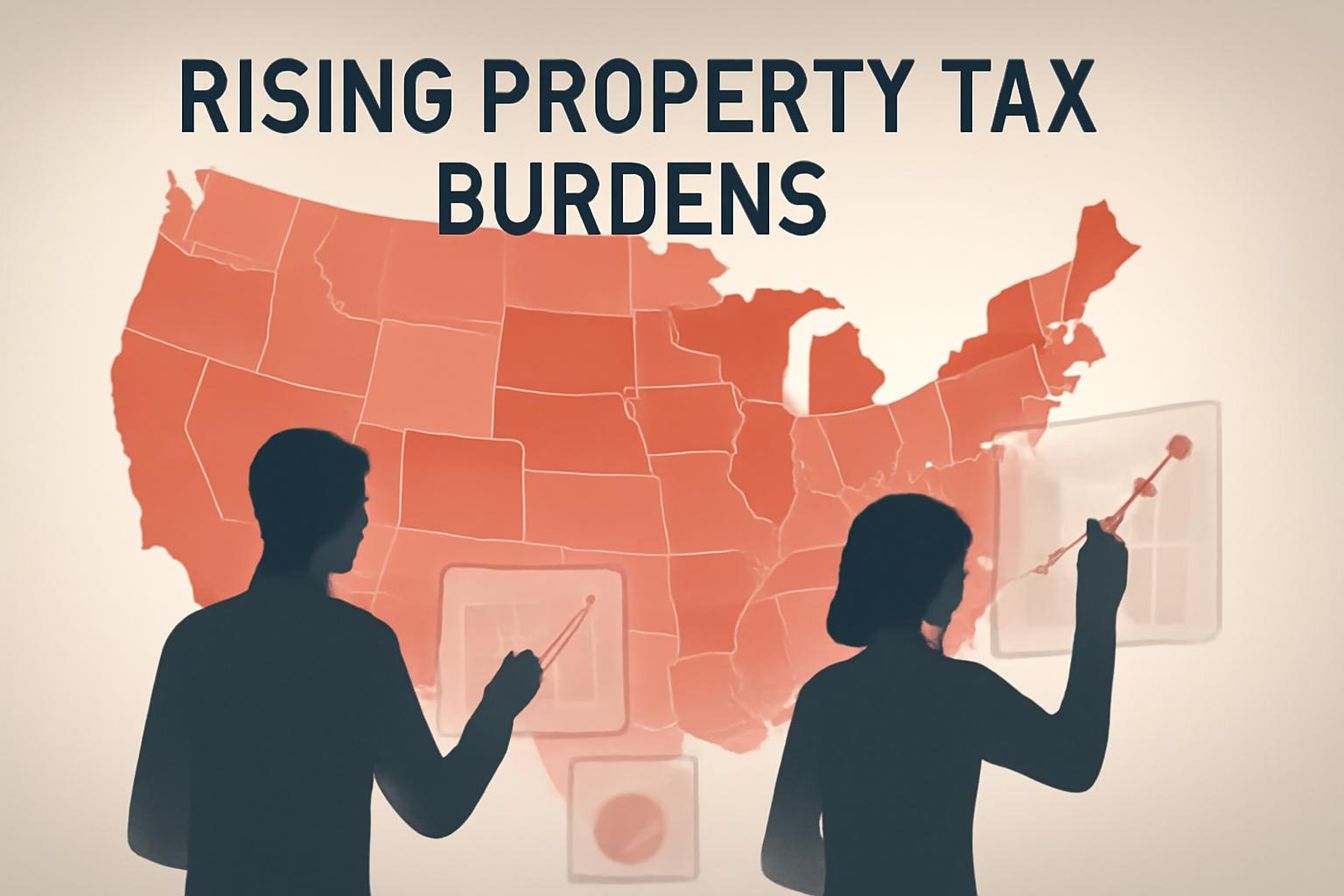Rising Property Taxes Strain Homeowners Across the U.S.
Property taxes, while not typically the largest component of monthly housing expenses, have increasingly pressured household budgets. Data from CoreLogic indicates that homeowners are paying 27.4% more in property taxes than they did in 2019, contributing to financial unpredictability for many.
A March 2025 survey by Ownwell found that 67% of homeowners who budgeted for property taxes experienced bills higher than expected this year. Similarly, a recent Insurify poll identified property taxes as the most underestimated cost among Gen Z homeowners, highlighting a broader trend of rising tax burdens complicating financial planning.
State-Level Variation in Property Tax Bills
Property tax obligations vary widely across states. According to the 2023 Tax Foundation data, median annual property tax bills range from a high of $9,163 in New Jersey to a low of $786 in Alabama. These figures represent median bills and do not directly reflect home values or tax rates, as local policies and exemptions can significantly influence actual payments.
In states without an income tax, property taxes often serve as a primary funding source for local services, resulting in higher median bills. Texas and New Hampshire exemplify this pattern with some of the highest property tax bills nationwide. Conversely, states like Alaska and Nevada offset the absence of income tax with revenue from oil and tourism, respectively, alleviating some pressure on property taxes.
High home prices are not always synonymous with high property taxes. California, despite its expensive housing market, maintains relatively moderate median property tax bills due to assessment caps and exemptions for owner-occupied residences. Similarly, Hawaii relies more on a general excise tax, keeping property tax bills comparatively low despite elevated home values.
Urban Property Taxes Reflect Housing Demand
In metropolitan areas where housing demand and land scarcity drive up home values, property tax bills tend to be higher. LendingTree’s 2023 study shows median property tax bills of $9,937 in New York City and $9,554 in San Jose, figures that exceed many state-level medians reported by the Tax Foundation.
Strategies to Manage Property Tax Costs
Because property taxes are often underestimated, they can become unexpected financial burdens. Reassessments of property values may further increase tax liabilities, underscoring the importance for prospective buyers to evaluate historical tax bills and understand local tax base trends.
Leo Pond, a Vermont-based real estate agent, advises budgeting an additional 5% to 10% above the anticipated property tax bill to cushion against potential increases. “Property taxes are often one of the most underestimated costs of homeownership,” Pond notes, emphasizing the need for forward-looking financial planning.
FinOracleAI — Market View
The sustained rise in property taxes since 2019 represents a growing cost pressure for homeowners, potentially dampening housing market activity in high-tax states. This trend may constrain affordability and impact demand, particularly among first-time buyers and younger generations who already cite taxes as a major underestimated expense. Investors and market participants should monitor state-level tax policy changes and reassessment schedules, as these factors will influence homeowner costs and market dynamics.
Impact: negative













